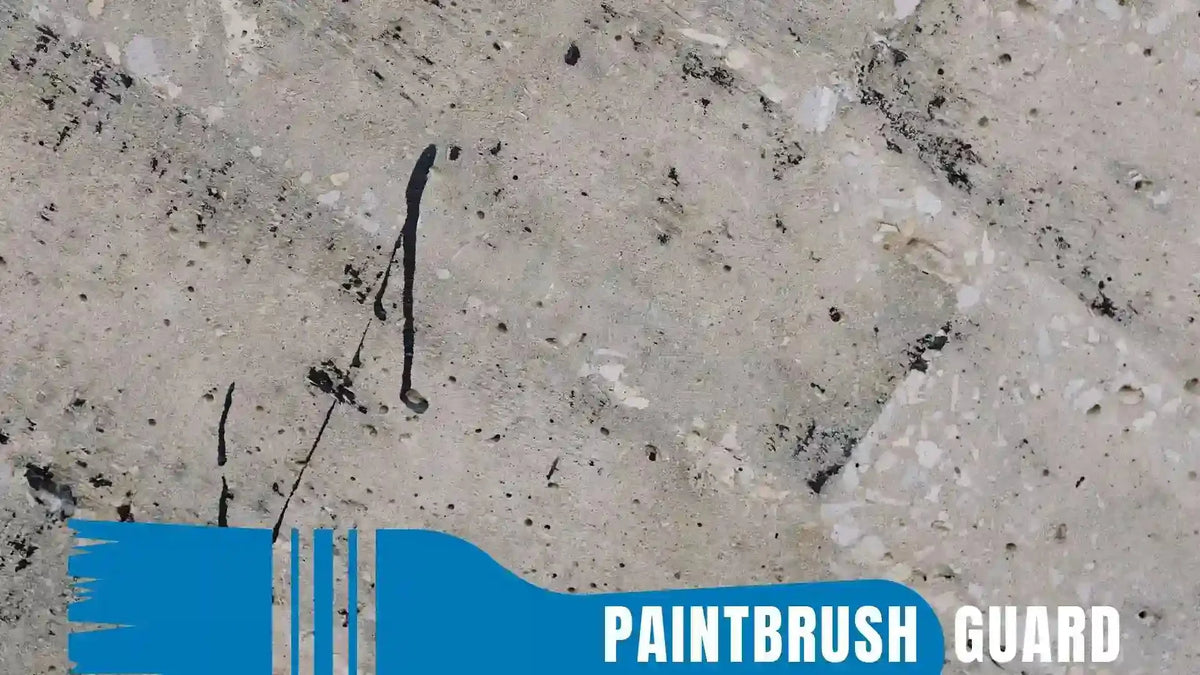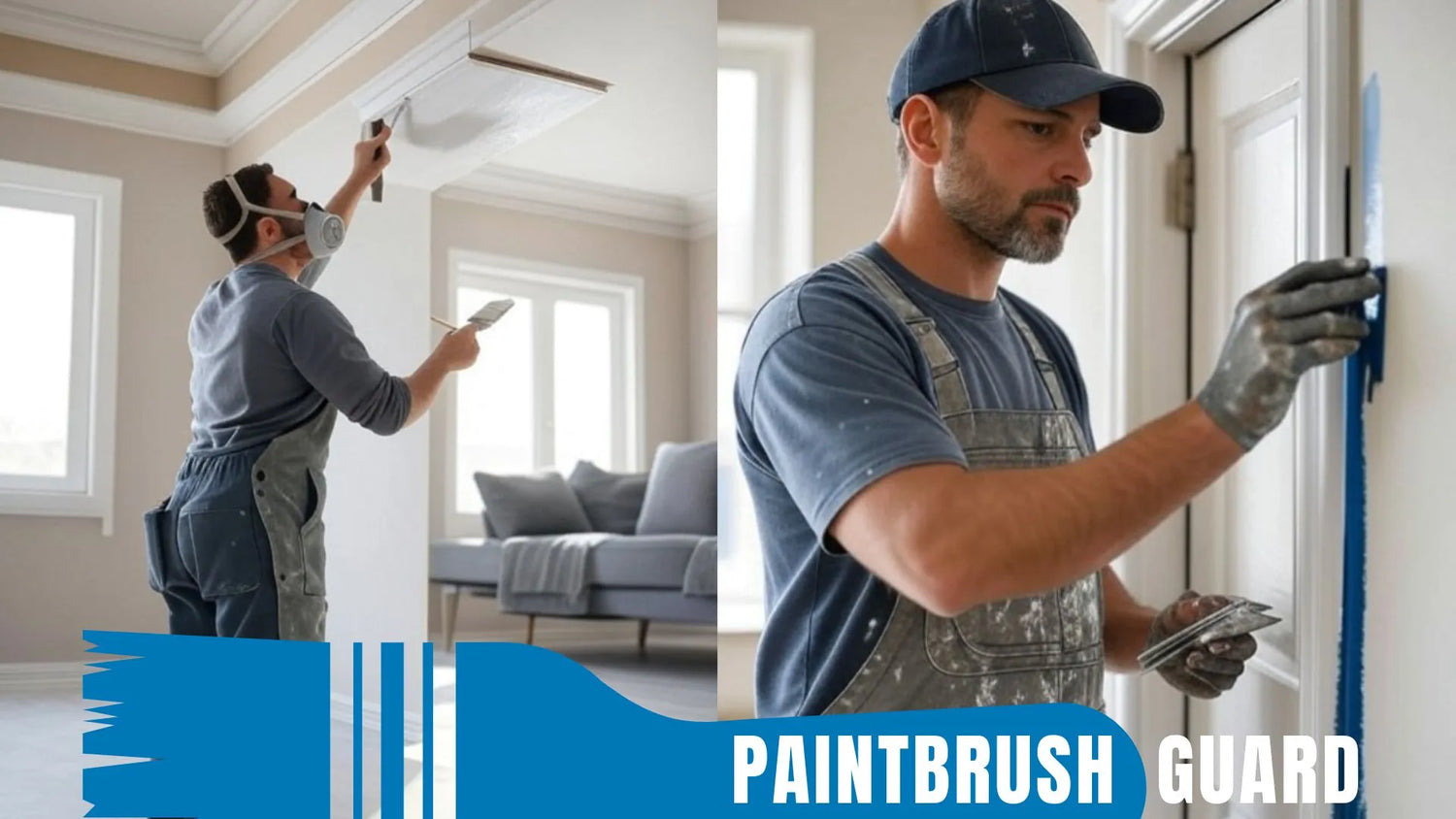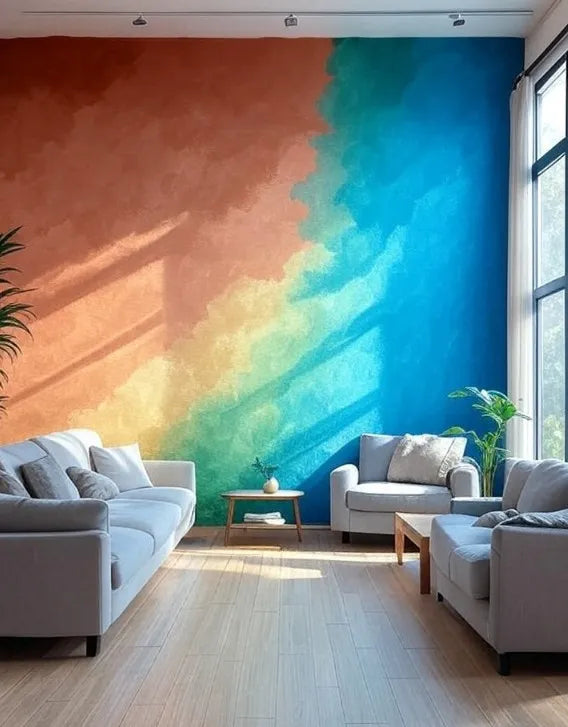
6 Tips for Exterior Concrete Painting in Wet Conditions
|
Time to read 9 min
|
Time to read 9 min
This article shares six practical tips for Exterior concrete painting in wet conditions, helping you navigate challenges like rain, humidity, or damp surfaces.
You’ll discover how to select the right paints, time your project, and prepare surfaces effectively.
We’ll also answer common questions and provide strategies to ensure a quality finish.
Painting exterior concrete surfaces like patios, driveways, or walkways in wet conditions requires careful planning to avoid issues like peeling, bubbling, or uneven finishes.
High humidity, rain, or damp concrete can prevent paint from adhering properly, reducing Exterior concrete painting durability.
For example, painting a wet driveway may lead to blisters within days, as trapped moisture escapes. With advanced paints and techniques, you can overcome these challenges by choosing weather-resistant products and timing applications wisely.
These six tips help you achieve a professional result despite moisture, ensuring your concrete stays protected and attractive for years.
This article explores the relationship between painting concrete and waterproofing, the types of paints that work best, application techniques, and limitations to help you make an informed decision.
Selecting paints designed for wet conditions is crucial for a lasting exterior concrete paint.
Water resistant paints, such as acrylic latex or elastomeric formulations, offer flexibility and moisture resistance that is ideal for concrete exposed to rain or humidity, ensuring a better finish even in challenging weather.
This step ensures your paint withstands moisture, enhancing longevity.
Learn 6 tips for exterior concrete painting in wet conditions. Discover how to choose paints, time applications, and ensure durability despite rain or humidity.
Timing your concrete painting around dry weather windows minimizes the impact of wet conditions.
Even in rainy seasons, brief periods of low humidity and no precipitation allow paint to cure properly, preventing issues like wash off or poor adhesion.
This planning, taking 30 minutes of research, sets your project up for success.
This article explores the key distinctions between exterior paint and concrete paint, including their composition, applications, and performance, helping you choose the best option for your specific project.
Preparing concrete surfaces thoroughly is essential for Exterior concrete painting in wet conditions, as damp or dirty surfaces hinder paint adhesion. Proper cleaning and drying create a stable base, allowing paint to bond effectively despite moisture challenges.
This 2 to 4 hour task ensures a paint ready surface, even in wet environments.
Quick drying primers and paints reduce the risk of rain or humidity affecting your Exterior concrete painting project in wet conditions.
Fast setting products cure rapidly, forming a protective barrier before moisture can interfere, ensuring a smooth, durable finish.
This approach, adding 1 to 2 hours per coat, protects your paint job from weather.
Explore the benefits, drawbacks, key considerations, and alternatives to help you decide if it’s the right approach. By weighing these factors against your needs and preferences, you can choose the best solution for a durable, attractive outdoor concrete finish.
Applying paint in thin, even coats is a key strategy for exterior concrete painting in wet conditions, as it promotes faster drying and better adhesion. Thick coats trap moisture, leading to bubbles or peeling, especially in humid or rainy weather.
This method, extending painting time by 1 to 2 hours, ensures a uniform, durable finish.
Check out our blog for Home Improvement painting: Learn about eco-friendly painting solutions, painting tips and get started with your own home project today!
Protecting freshly painted concrete from rain or dew in wet conditions is critical to maintain Exterior concrete painting durability.
Shielding surfaces during the initial curing period prevents water from disrupting the paint’s bonding process, ensuring a long lasting result.
This 30 minute to 1 hour task safeguards your paint job during curing.
Tip |
Time Required |
Best For |
Choose Water Resistant Paints |
30 minutes |
Ensuring moisture resistance |
Time Painting for Dry Windows |
30 minutes |
Avoiding rain or humidity |
Ensure Proper Surface Prep |
2 to 4 hours |
Enhancing paint adhesion |
Use Quick Drying Products |
1 to 2 hours/coat |
Reducing weather exposure |
Apply Paint in Thin Coats |
1 to 2 hours |
Promoting fast drying |
Protect Freshly Painted Surfaces |
30 min to 1 hour |
Preventing water damage |
This table outlines strategies for painting concrete in wet weather.
Discover the best paint types for exterior deck painting in high traffic areas. Learn about acrylic latex, oil-based, epoxy, and urethane-based paint.
Painting slightly damp concrete is risky, as moisture can cause poor adhesion and bubbling, reducing Exterior concrete painting durability in wet conditions.
Hydraulic cement patches can be applied to damp surfaces, but for painting, ensure the concrete is dry for 24 to 48 hours after cleaning.
Use a moisture tolerant primer and quick drying paint to mitigate minor dampness, testing a small area first.
High humidity, above 70 percent, slows paint drying and can cause blisters or uneven finishes in Exterior concrete painting during wet conditions.
Paint in low humidity windows (below 70 percent) and use quick drying, moisture resistant paints to minimize issues.
Monitor local weather to find optimal conditions, ensuring proper curing for a durable result.
A sealer isn’t always required but enhances Exterior concrete painting durability in wet conditions by adding moisture and UV protection.
Apply a breathable, concrete specific sealer every 2 to 3 years after painting, ensuring the surface is clean and dry.
This extra step, taking 2 to 3 hours, protects against rain and wear, especially in humid climates.
This guide tackles the top 20 questions about storing paintbrushes, from quick breaks to long-term care, and even challenges like humid coastal areas.
Achieving a durable finish with exterior concrete painting in wet conditions is possible with these six tips.
From choosing water resistant paints to protecting fresh coats, these strategies ensure your patios, driveways, or walkways shine, even in rain or humidity.
With eco-friendly tool your project will thrive and the environment is safer. Happy Painting!
High humidity, rain, or damp concrete can cause peeling, bubbling, or uneven finishes, reducing exterior concrete painting durability. Thorough preparation, including cleaning, drying, and using moisture-resistant products, ensures proper paint adhesion and a long-lasting finish, preventing costly rework in wet conditions.
Water-resistant paints like acrylic latex with mildew inhibitors or elastomeric formulations are ideal for wet conditions, as they offer flexibility and moisture resistance. Choose paints labeled “wet surface compatible” or “low humidity tolerance” and test a small area to ensure adhesion for exterior concrete painting.
Time painting for 24–48-hour dry periods with 50–85°F and below 70% humidity, checking 5–7-day forecasts. Pressure wash to remove dirt and mildew, use a degreaser for stains, dry for 24–48 hours, and apply a masonry primer suited for damp surfaces to ensure adhesion for exterior concrete painting.
Quick-drying primers and paints (1–2 hours per coat) reduce exposure to rain or humidity, while thin coats applied with a ¾-inch nap roller or 2-inch brush promote faster drying and better adhesion. Using Paintbrush Guard to keep brushes wet during breaks streamlines exterior concrete painting in wet conditions.
Cover painted areas with tarps or plastic sheeting within 24 hours if rain is forecast, securing with stakes for airflow. Avoid foot traffic for 48 hours and check for dew accumulation, wiping gently if needed. These 30-minute to 1-hour measures safeguard exterior concrete painting durability during curing.
Check our exterior house painting guide for more tips, or other releated house painting articles here:
How Long Does Exterior Paint Last on Metal?
Learn how long exterior paint lasts on metal, factors affecting durability, and expert tips for preparation and maintenance to extend its lifespan.
8 Maintenance Tips for Exterior Brick Painting
Learn 8 maintenance tips for exterior brick painting durability. Discover how cleaning, inspections, and touch ups ensure your painted brick lasts for years.
What Type of Paintbrush Is Best for Home Exterior Painting
What type of paintbrush is best for painting your home’s exterior with tips on bristles, sizes, and prep for a professional finish. Home exterior painting tips.
Duration Exterior Painting: Prep Guide for Efficiency
Master duration exterior painting with this prep guide. Learn to inspect, clean, repair, and prime for a quick, lasting finish on your home’s exterior.
6 Fixes for Peeling Before Exterior Wood Painting
Discover 6 fixes for peeling before exterior wood painting. Learn how to scrape, sand, and prime wood for a smooth, durable painted finish.
Can You Paint Old Exterior Wood and How to Do It Right
Learn if you can paint old exterior wood. Discover why preparation prevents peeling, risks of skipping it, and tips for a durable, professional finish.
Can You Paint Straight Onto Exterior Brick? Risks and Best Practices
Painting directly on exterior brick is possible but risky without preparation. Learn why preparation is crucial, risks of skipping it, and tips for pro finish.
6 Ways to Patch Holes Before Exterior Concrete Painting
Discover 6 ways to patch holes before exterior concrete painting. Learn methods like vinyl patching or hydraulic cement for a smooth, durable painted finish.

Learn about eco-friendly painting, tips and tutorials on house interior and exterior surfaces, so you can get started with your project without any surprices during or after your painting.

Learn how interior house paint colors influence mood with expert tips on room preference so you can pick the best colors for a harmonious home environment.
We focus on the most popular shades for each interior colors, so you don't miss no matter what color you pick.

Learn how this innovative tool allows you to store paintbrushes without the need for immediate cleaning, offering significant advantages in time savings, water conservation, reduced chemical pollution, and lower costs for supplies.



